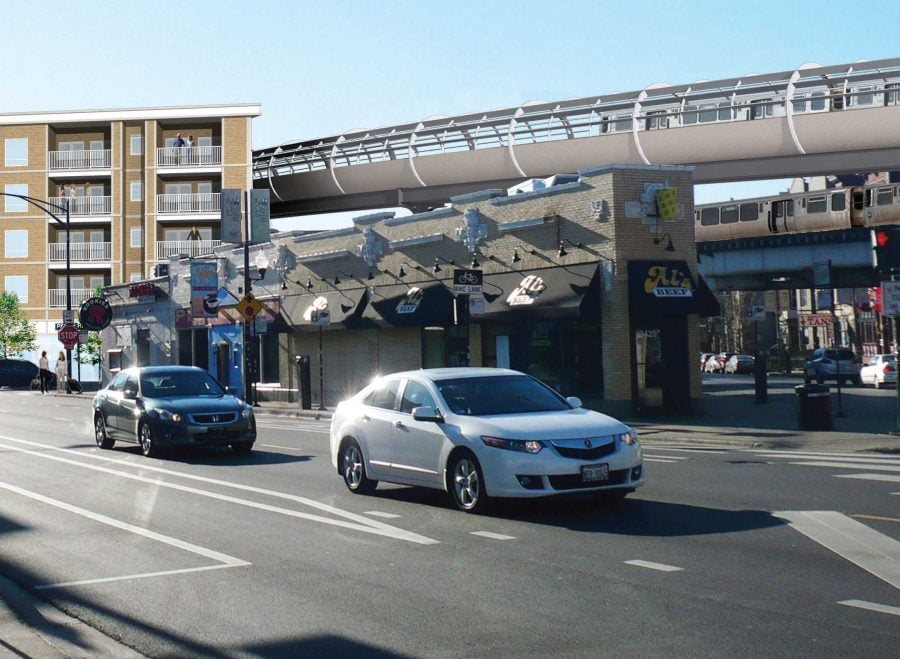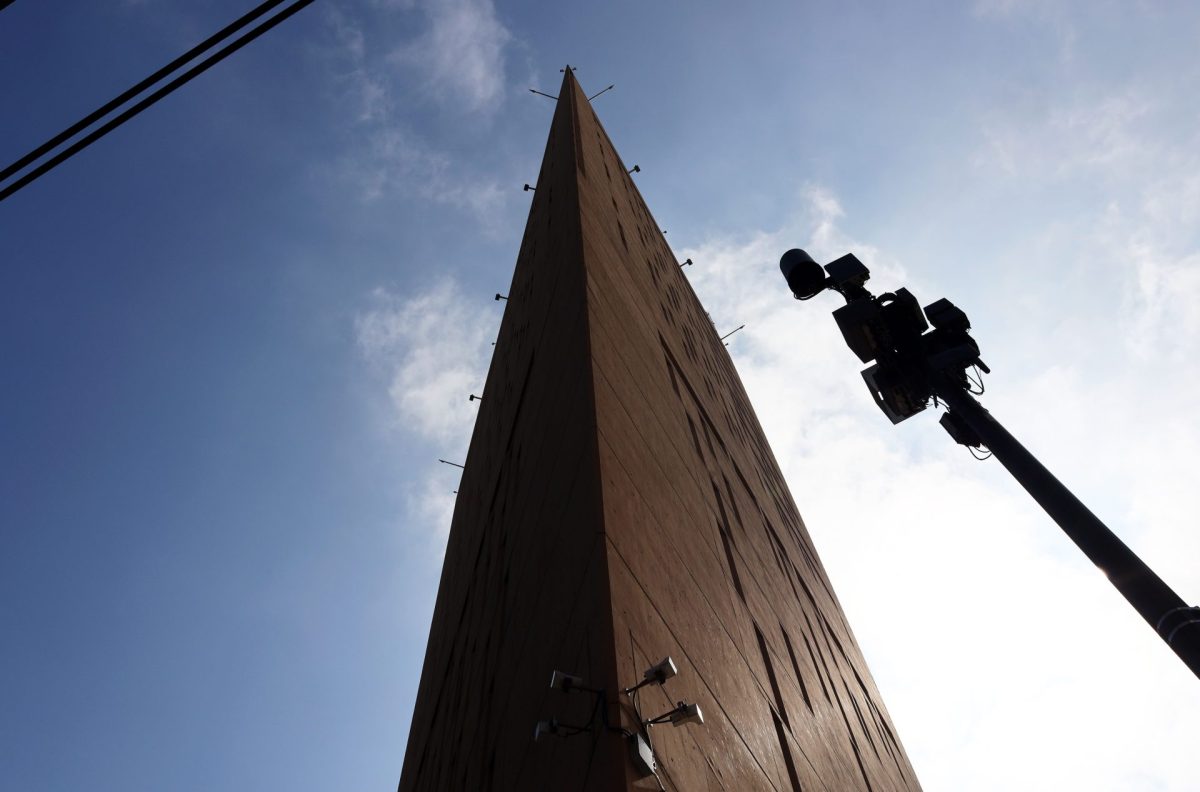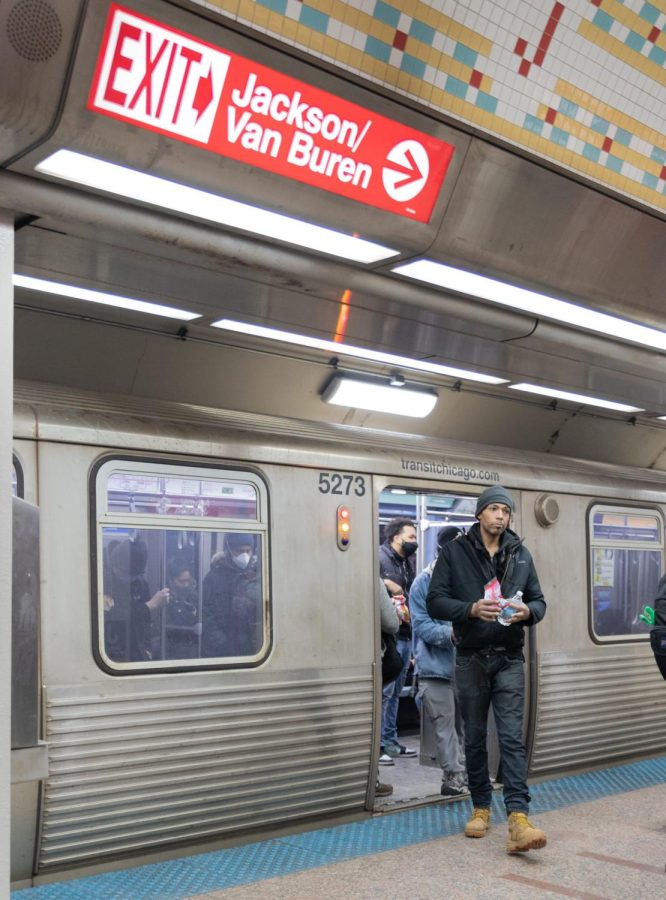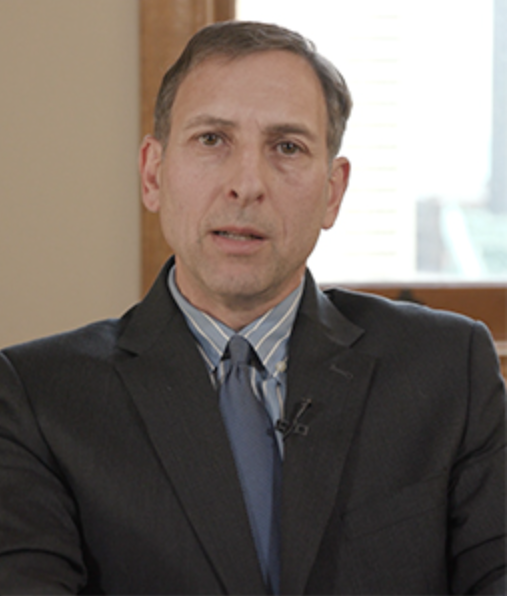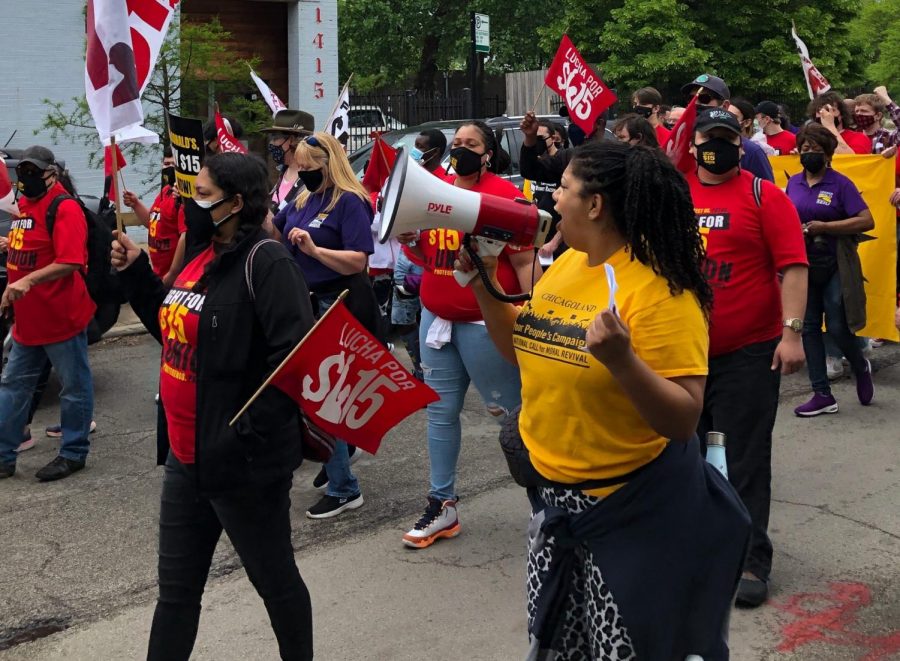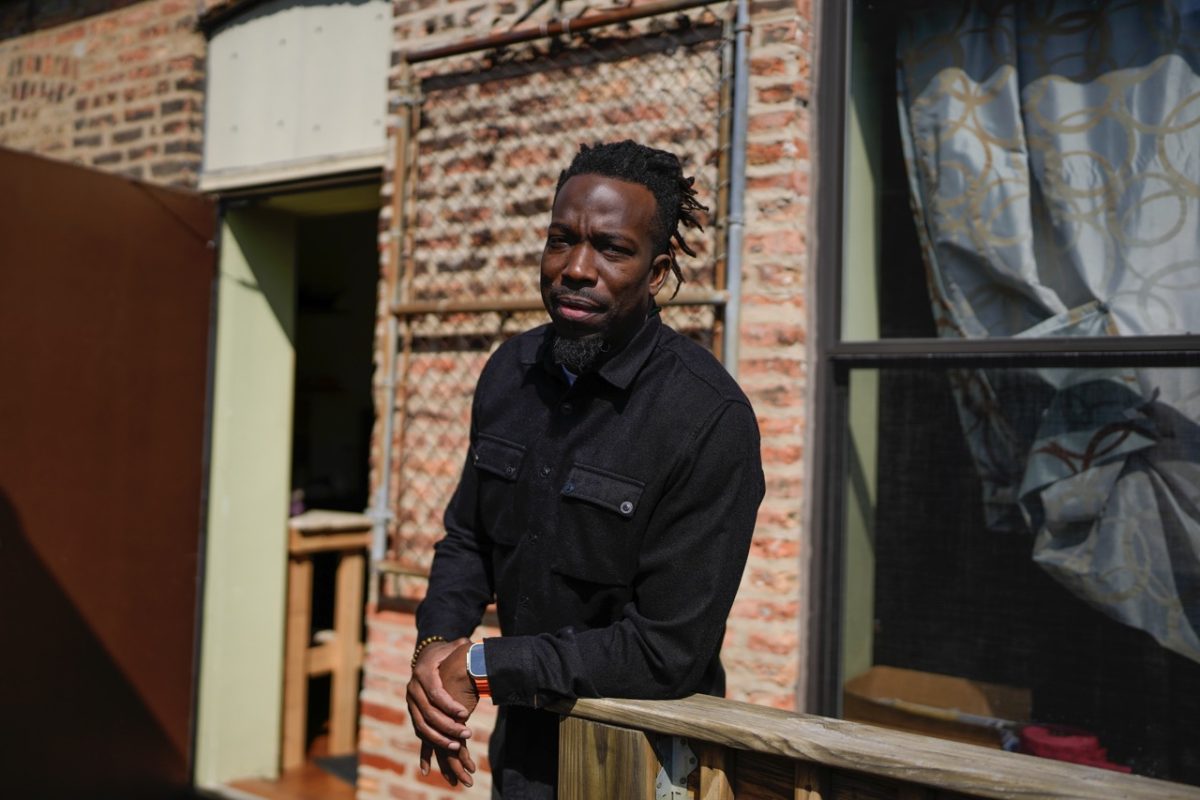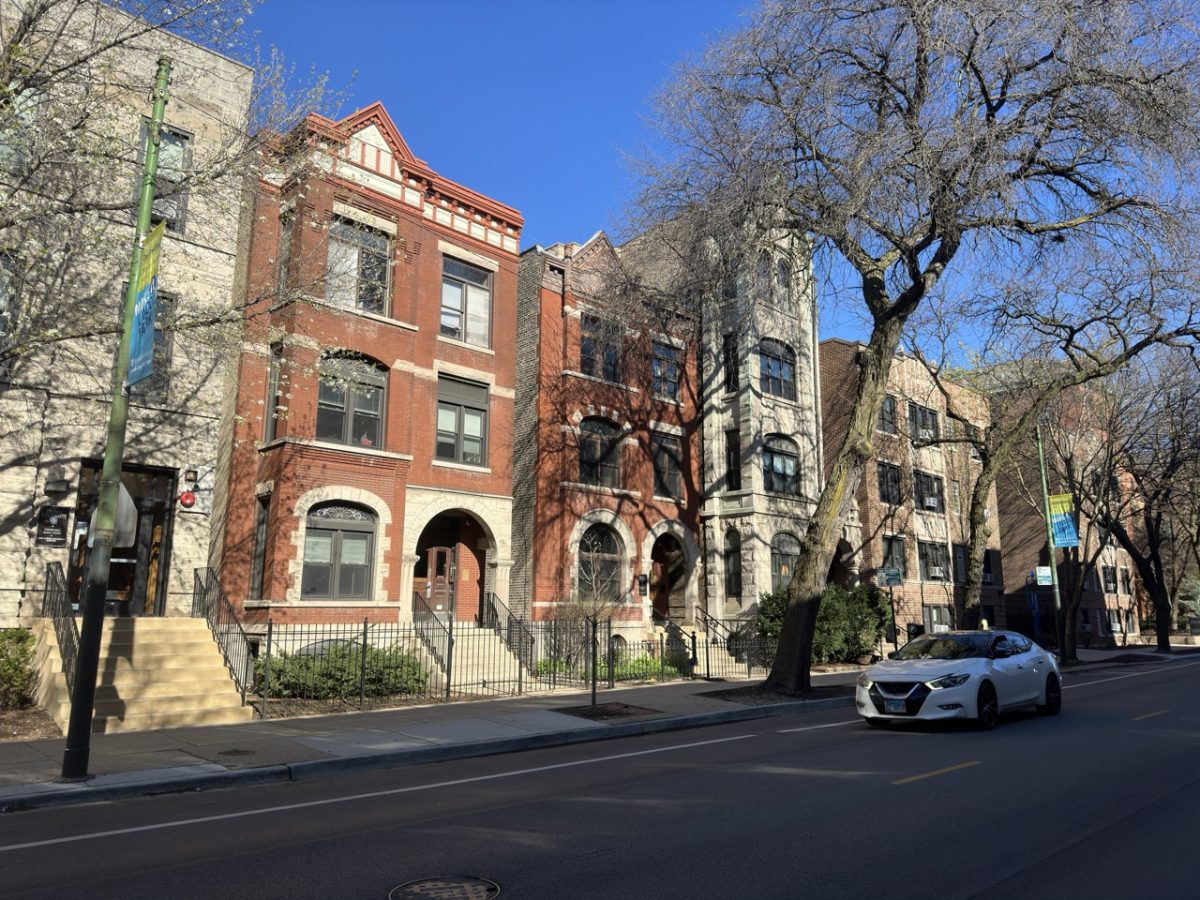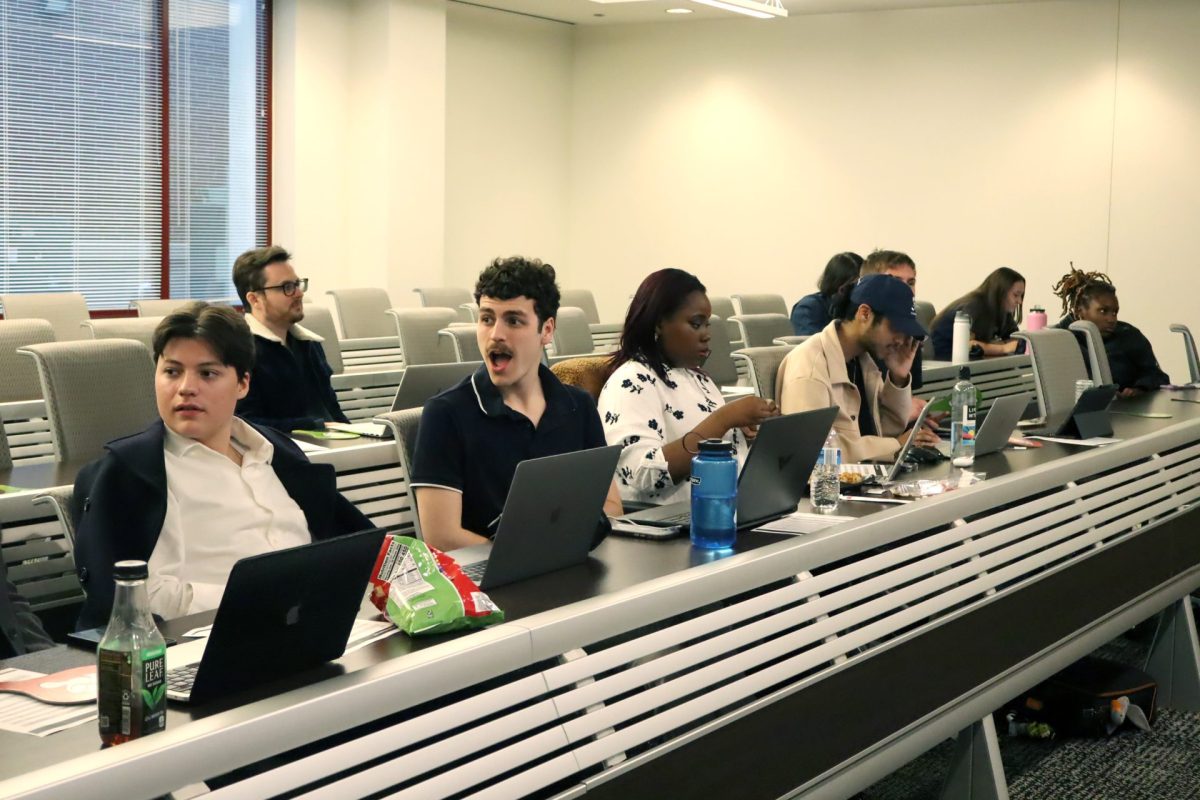The CTA open house meeting for the Belmont Flyover Thursday night at the 19th District Police Station, 850 W. Addison St. was a like a beehive that just got shook.
Everyone in the room was buzzing about the $320 million bypass plan that, if approved, would collect a federal Core Capacity subsidy and initiate the bulldozing of 16 structures that belong to homeowners and businesses along Clark Street, Sheffield Avenue, Wilton Avenue, Roscoe Street and Newport Avenue. The Belmont Flyover would route northbound Brown Lines trains over the Red and Purple Line tracks to help reduce train delays.
At 5:30 p.m. residents and business owners were let in a room off the main police station foyer to find dozens of CTA representatives, all dressed in black suits with CTA badges, ready to receive them — smiles and all.
By 6:30 p.m. the room was jammed, without room to move freely. Ellen Hughes was handing out tracts about her new group, Citizens Against the Belmont Flyover.
“We chose that name because we wanted to be clear,” Hughes said. “I live on Wilton, east of my neighbors who will be kicked out of their homes, and our cause is to stop (the CTA).”
Hughes said she was staggered when she saw the room full of CTA representatives who arrived early and set up myriad displays and information stations.
“I was told this was going to be a meeting, like a public hearing.” Hughes said. “This is just an open house for the CTA to control all the information they want known.”
Each CTA representative was poised — each flanking an easel, which held a poster of plans, other workers standing behind tables laid out with maps, charts and graphs to allay doubts and grievances.
“This is an opportunity [for anyone] to voice their opinions,” said Lambrini Lukidis, a CTA media representative. “[Everyone’s] comments will be part of the final design, we’re not making this proposal in a vacuum.”
Lukidis was busy bouncing around the room, fielding each inquiry one by one. She said there’s a lot of misinformation going around as to what the CTA is proposing.
“The delays and unreliability of the ‘L’ are only symptoms of the problem,” Lukidis said. “But we are focusing on the bigger picture. The heart of the problem is a capacity issue.”
The capacity issue the CTA is addressing is the increased use of the ‘L’. During rush hour, they can only get 40 trains through per hour, which makes the trains uncomfortably overcrowded. With the CTA’s projected rise in population density, the ‘L’ simply won’t have enough room for all the riders and would have to turn some away.
CTA media representatives said turning away ‘L’ customers would lead to gridlock and pollution in the city. They encourage public transportation as a green alternative.
“We’re talking four minutes for every train that passes that pinch-point [at Belmont],” Lukidis said. “It causes a ripple effect. This [project] is for the future. We’re trying to be good stewards to the city and continue to foster public transportation.”
According to CTA representatives, the Belmont Bypass Project is in the environmental assessment stage. In order to get approval by the Federal Transit Administration (FTA), the CTA needs to submit a plan that considers residents and business owners. “
Right now we’re addressing every comment and statement made, and then we present a mitigation,” Lukidis said. “Then we would address a statement to the FTA about how to minimize certain issues that recur in the comments.”
Mariela Bayer rents near the Addison stop and came to support the bypass because it might reduce crime underneath the viaducts and tracks.
“For me, the Clark and Sheffield area is really unattractive and unsafe,” Bayer said. “I want the redevelopment to improve safety.”
Lukidis directed Bayer to a project manager so she could help them incorporate neighborhood needs into their proposed plan.
Dan Bowles, the general manager of Berlin Nightclub at 954 W. Belmont Ave., said the numbers the CTA is proposing about core capacity — the maximum amount of ‘L’ passengers — and estimated population growth don’t make sense.
Bowles pointed to the chart that showed a projected 300 percent rider increase within 15 years.
“Currently the CTA says we are at 40,000 riders a day,” Bowles said. “And they are projecting we’re going to hit 100,000 riders a day when there’s a massive flight from Chicago. Show me where these magical people are coming from.”
In April, Melody Carvajal walked to each home and business and handed out a personally signed letter to each person affected by the bypass proposal.
“The whole idea was to put a face on this proposal so the businesses [and homeowners] weren’t just sent a letter,” Carvajal said. “I was there to answer questions and provide all the necessary information for them. They were all very emotional.”
Tammy Chase, the CTA director of communications and media relations, was empathetic about residents’ fears.
“We can’t have major changes, and I mean with anything, without complaints and people who are opposed,” Chase said. “But it would be irresponsible for us not to do this.”
Chase said the long-term consequences of not building a bypass would be more detrimental to the residents and businesses. Chase said by 2030 the CTA thinks they will need at least double the trains to accommodate the growing number of riders.
“Right now the delays are small — but they’re real,” Chase said. “The bypass is a proposal, and we are working on several solutions for the problems we are about to face”
Chase said the proposal is in the earliest stage, and the earliest they would start is 2017.
Some questions linger: How long did the CTA know about this project and where is the money coming from?
Lambrini, Carvajal and Chase, all CTA media representatives, provided answers to accusations implying foul play.
“We had been planning this for years,” Lambrini said. “But we are very, very early in the process and these are still only proposals and potential impacts.”


